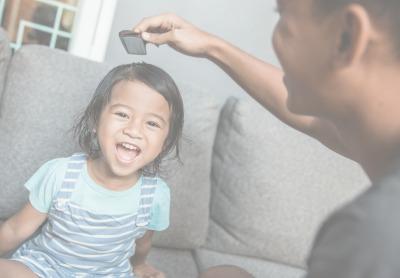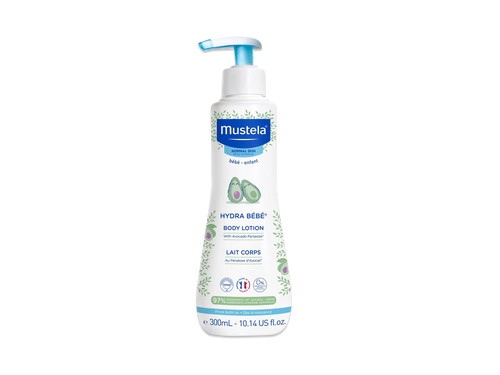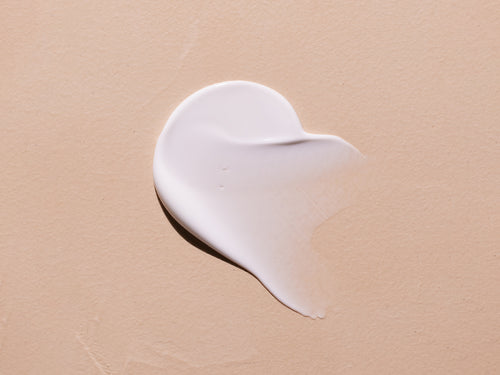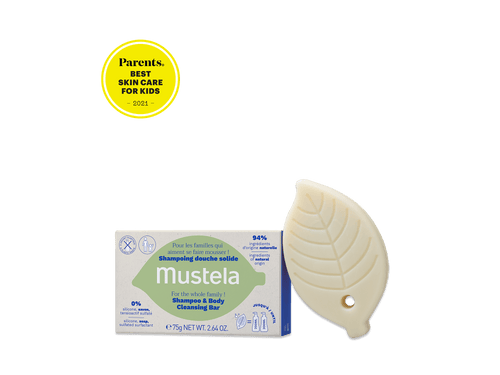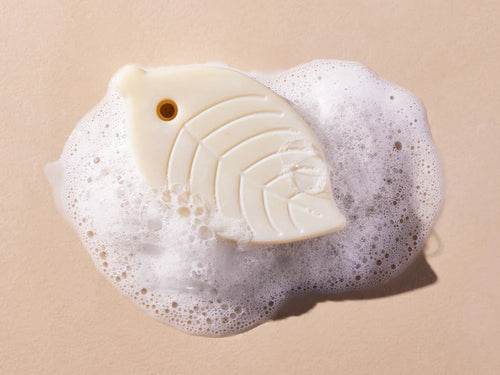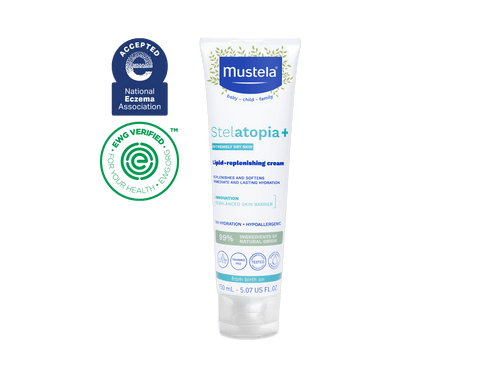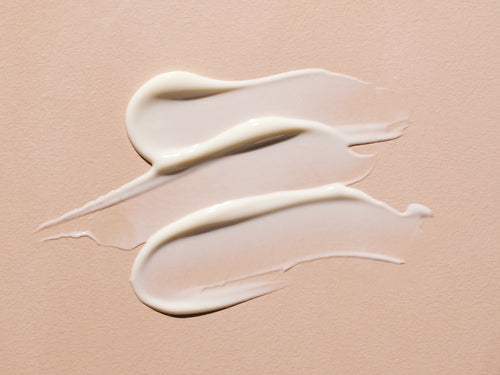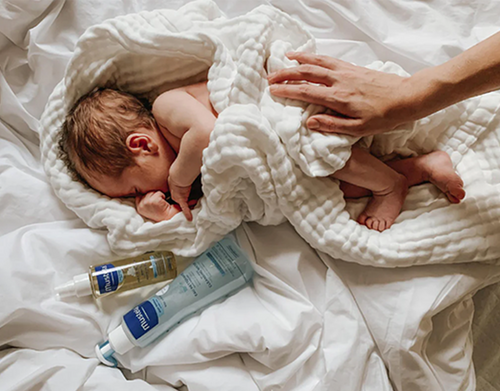As your toddler grows, it’s exciting to watch them go through the many changes that come with living and developing — taking their first steps, teething, learning, exploring, and growing a full head of hair, for instance. But along with those exciting changes come a few challenges for parents.
For example, as your toddler grows a fuzzy, full head of hair, are you shampooing and conditioning enough? When should you take them to the salon for a trim? Is that a knot?
Children's hair and tangles go hand-in-hand. And while detangling your child’s knotted hair may prove to be a slow lesson in patience, it’s important to know how to do it correctly. The experts at Mustela are here to help. You’re not alone in this battle to detangle hair.
Throughout this article, the experts at Mustela will explain why hair tangles happen, what you can do to detangle hair, and how to keep your toddler’s tresses looking soft and beautiful.
Toddlers And Tangles

Most children are born with a fine layer of hair that will thicken and develop as it grows over time. The problem from the get-go, though, is that fine hair tangles easily. And when you have a toddler who is on the move and exploring, tangles and knots are practically inevitable.
Detangling your toddler’s hair after a shower or brushing through their morning bedhead can be a battle — complete with crying, screaming, and fighting. Fortunately, there are hair products available that can help.
First and foremost, it pays to opt for a product line that is specifically designed for children. Most product lines designed for babies and children are formulated to be gentle and contain natural ingredients. Those ingredients, like the ones found in Mustela’s Skin Freshener, are formulated to help protect your baby's delicate skin — including the skin on their scalp.
But finding natural products is just the beginning of correctly detangling your toddler’s tresses. Here are seven expert tips for safely, gently, and (hopefully) tearlessly detangling your toddler’s hair.
How To Detangle Hair
1) Make Brushing Fun

Brushing tangled hair hurts — especially if someone else is doing the tugging. At such a young age, your child is most likely not impacted by the social mores that inform us to have tangle-free hair, and he or she will have no reason to be motivated to have their hair brushed.
But regular brushing is a big necessity. And the first step to getting your child on board with a combing session is to make it as fun and painless as possible.
Have your toddler watch a movie or color while you work on their hair. You may also want to approach the task by brushing a small area and then taking a break before starting on a new area.
Keep combing as painless as possible by detangling from the ends and working your way up. If you just comb from the root down, you may end up pushing all the tangles together and creating one huge knot (which can be disastrous!).
And don’t forget to comb out your little one’s hair BEFORE bath time to ensure it’s tangle-free. Skipping this step can turn a small knot into a big, matted mess during the washing and drying process.
2) Use Detangling Spray
While your toddler’s hair is still wet, apply a child-formulated detangling spray liberally and massage the product into their hair and scalp. Use Mustela’s Skin Freshener to style your little one’s hair and keep their scalp safe.
Mustela’s Skin Freshener gently refreshes and moisturizes your toddler’s skin in one soothing step. Along with protecting your little one’s delicate skin, the Skin Freshener can also be used to keep their scalp cool and comfortable during warmer months.
3) Wash With A Gentle Shampoo

As mentioned earlier, your toddler’s hair may tend to be finer when they’re younger, but that doesn’t mean you should start washing your toddler’s scalp with products that promote “volumizing.” Volume isn’t what your child needs, and most volumizing products are very drying, which can make your little one’s hair even more prone to tangling.
Instead, wash your toddler’s hair with a gentle shampoo that is specially formulated to clean their delicate head and scalp. Mustela's Gentle Shampoo is the perfect daily solution for cleaning your little one’s fine hair and sensitive scalp.
Mustela’s tear-free, biodegradable formula cleans without stripping your toddler’s scalp of its natural oils and rinses easily. It provides the perfect foundation for maintaining clean, tangle-free tresses.
4) Treat Hair In The Morning

Detangling isn’t just for before bed. In the mornings — before school, summer camp, or errands — use a quick spritz of detangler and comb your toddler’s hair to smooth any tangles that may have developed overnight.
5) Don’t Skip The Conditioner
During your toddler's next bath, apply a baby conditioner and gently comb and massage the conditioner through the ends of your child’s hair. Tangles will come out more easily, and your toddler’s hair will feel soft and silky.
6) Focus On Technique

Experts suggest that to keep your toddler’s hair the healthiest, focus shampooing and scrubbing on the roots of their hair. Don’t necessarily pull your child’s shampoo through to the ends of their hair, and don’t pile their hair up on top of their head in a big, soapy pouf.
Instead, gently scrub shampoo into the scalp/root area only. Rinse it out, then apply conditioner to just the ends of their hair. Basically, hold your toddler’s hair out at an angle from their head, as if you were preparing to cut it. Apply conditioner to just the ends of the hair that are furthest away from the scalp.
Let the conditioner stay on your little one’s hair for the duration of the bath, then rinse it out right before bath time is over.
This technique works because most of the time, fine hair is really only getting dirty up by the scalp, thanks to all our natural oils. By over shampooing the non-dirty ends, we can dry them out, making them prone to frizz, breakage, and tangles.
7) Keep Your Toddler’s Hair Trimmed And Healthy

Regular trims will do wonders for taming your toddler’s hair tangles. Think about it: when it comes to yourself, you can probably tell when you’re overdue for a haircut. Your hair may start getting extra knotty and the ends might start splitting, or you may notice your hair starting to tangle more and more around the shoulders.
The same thing is true of your toddler’s hair.
We recommend trimming your toddler’s hair every four weeks — even if that just means short, tiny trims to the ends of their hair. You’ll find this to help immensely with the back-of-the-head tangles.
Your Child’s Skin Goes Hand-In-Hand With Healthy Hair

Although your toddler’s skin may appear smooth and perfect on the outside, the expert researchers at Mustela have clinically proven that a baby’s skin continues to develop until the age of two.
During this crucial period of development, your little one’s skin is extremely fragile and is not able to fully protect itself from daily environmental conditions — that is especially true for the delicate hair on your child’s scalp.
Through analyzing the physiology of baby and child skin, Mustela’s research team has determined that by focusing on the health and proper nourishment of your baby’s skin, you can achieve the healthiest possible hair in return.
Tangles Happen
Despite your best efforts as a parent, tangles may (and do!) happen, but you can work to keep a knotty mess at bay. Use the expert tips above to detangle hair, and you’ll be able to maintain your child’s smooth and healthy hair as best as possible.
By learning how to best detangle hair — and by following a routine that aids in the detangling process before tangles even form — you’ll help keep brushing a tear-free activity for your little one.


